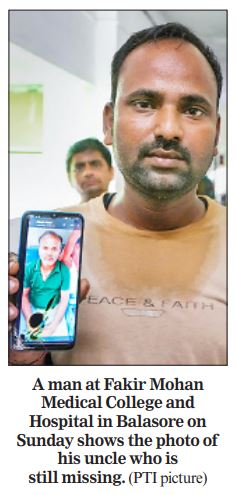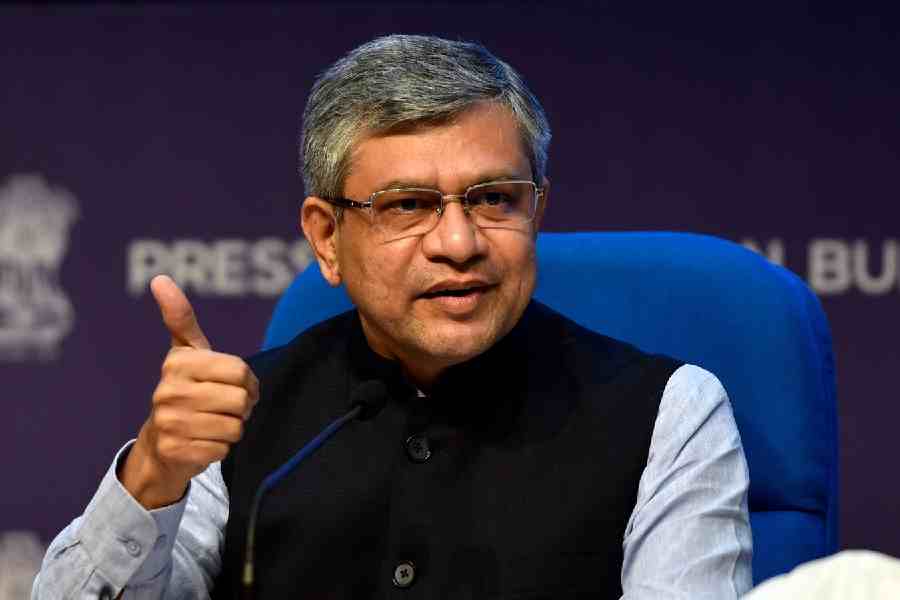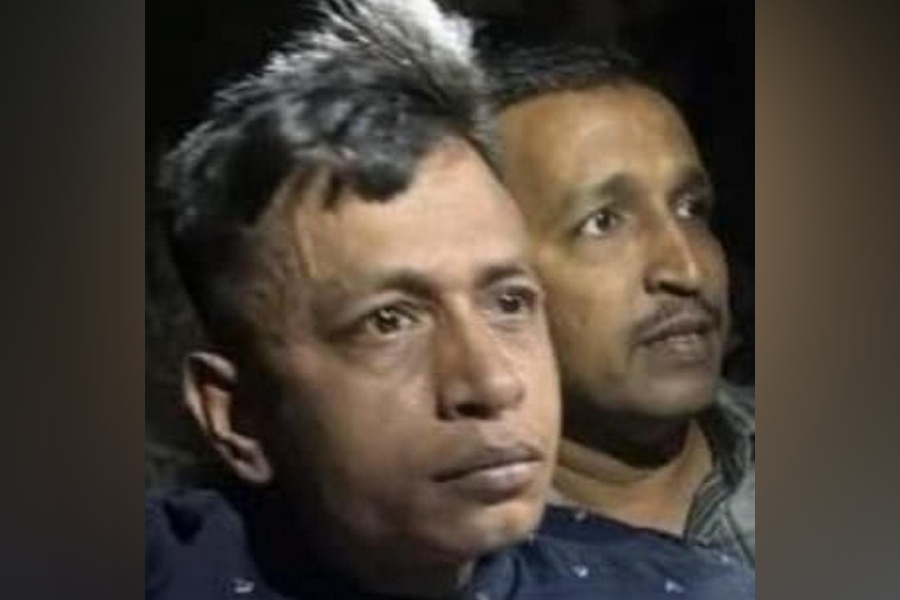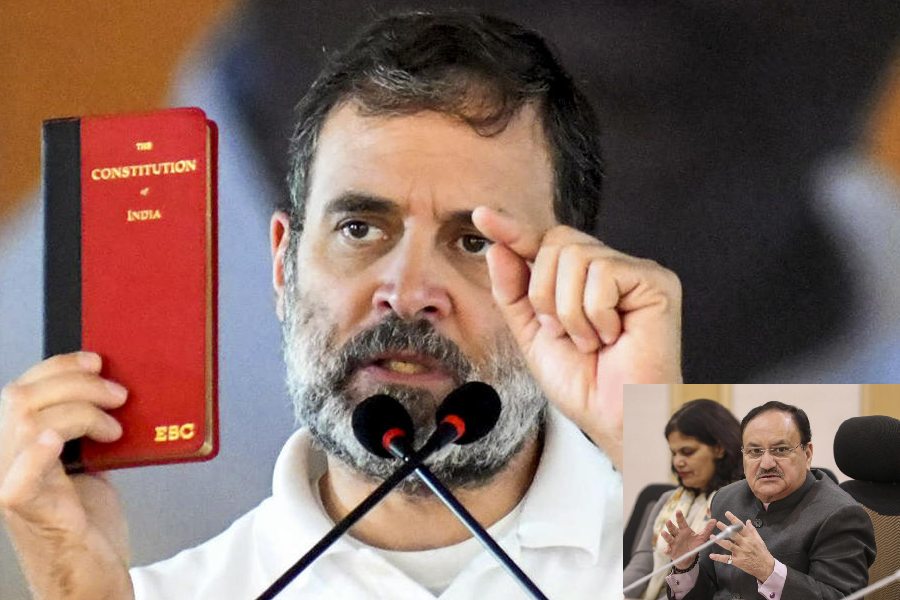One of the possible reasons for Friday’s multi-train crash in Balasore could be “someone (doing) some digging” near the cables of the electronic interlocking system and damaging them, a senior railway official said on Sunday.
Railway minister Ashwini Vaishnaw appeared to favour a sabotage theory saying the “root cause” of the accident — whose death toll has been revised from 288 to 275 — and the “criminals” responsible for it had been identified. He did not name anyone.
A railway release said Vaishnaw had told a news conference in Bhubaneswar that the Railway Board “is recommending CBI probe for further investigation in the derailment incident”.
It is not clear why a CBI investigation is being sought when the minister was quoted as saying the root cause and the culprits had been identified.
Earlier in Balasore, the minister had said the accident “happened due to a change made in the electronic interlocking and point machine”.
In Delhi, top railway officials virtually ruled out driver error and played down the likelihood of a system malfunction, saying the interlocking system was “error-proof” and “failsafe”. They did not rule out outside intervention.
“It is called a failsafe system, so it means that even if it fails, all the signals will turn red and all train operations will stop,” Jaya Verma Sinha, member, operation and business development, Railway Board, said. “Now, as the minister said there was a problem with the signalling system. It could be that someone has done some digging without seeing the cables.”
However, Sinha said, there were many “possibilities of what can go wrong”, including a short-circuit or even a machine failure.
“Ninety-nine point nine per cent there is no possibility of the machine failing but there is a 0.1 per cent chance of failure,” Sinha said. “That possibility is always there in all kinds of systems.”
She did not name the supplier or manufacturer of the system, nor its age, but said it was in use across almost the entire Indian railway network.
Officials had on Saturday said the interlocking system had correctly flashed the green light while erroneously switching the Shalimar-Chennai Central Coromandel Express from the Up Main Line to the loop line, where a goods train was parked.
The collision derailed multiple bogies onto the path of the Bangalore-Howrah Superfast Express that was passing on the Down Main Line.
A senior railway official who did not want to be identified said this kind of “tinkering” with the “logic” of the AI-based electronic interlocking system could only be “intentional” and ruled out any malfunction in the system.
“It could be a case of tampering or sabotage from within or from outside. We have not ruled anything out,” the official said.
A preliminary report from the ground too had indicated possible tampering, saying the signal was “given and taken off” for the Coromandel Express before it “entered the loop line”.
Sandeep Mathur, principal executive director of signalling, Railway Board, said the electronic interlocking system and point machine work in coordination to show the driver whether the track is clear.
A point machine operates turnouts, which allow a train to switch from one track to another without stopping.
“The signal is interlocked in such a manner that it will show if the line ahead is occupied or not. It will also be known whether the point is taking a train straight or towards loop line,” Mathur said.
“When the point shows straight and the track ahead is not occupied then the signal is green. If the point is taking the train on loop and (that) track is clear, then the signal is yellow and the route is shown of a different direction.”
Sinha gave the driver of the Coromandel Express a clean chit, saying he had the green signal to move forward and “was not over-speeding”.
“A green signal means that in every way the driverknows that his path ahead is clear and he can go forward with his permitted maximum speed. The permitted speed at this section was 130kmph and he was running his train at 128kmph, which we have confirmed from loco logs,” she said.
The Bangalore-Howrah Superfast Express was running at 126kmph. “In both the trains there was no question of over-speeding,” Sinha said.
“The Coromandel Express crashed with the goods train and its coaches went on top of the goods train. It was an iron-ore (laden) train, a heavy train, therefore the entire impact of the collision was on the (express) train.”
Sinha suggested that had the Coromandel-goods train collision happened a fraction of a second later, the Bangalore-Howrah train, whose last two coaches were hit, could have escaped the crash.
The commissioner of railway safety has completed his investigation at the site and is expected to meet witnesses on Monday and Tuesday.
A South Eastern Railway statement appealed to “rail users, local public and other bodies” who had “any information related to the accident case” to depose before the commissioner who would hear them from 9am on Monday and Tuesday at the South Institute, Kharagpur.
Sinha said at least two of the affected railway lines at the accident site were expected to be operational by 8pm on Sunday.
She said that senior railway officials were answering calls to the helpline number 139, trying to connect as many people as possible.
“The family members of the injured or deceased can call us and we will make sure that they are able to meet them. We will take care of their journey and other expenses,” she said.
The railways said the 139 service would continue uninterrupted and pledged prompt disbursal of the ex-gratia announced by the minister -- Rs 10 lakh for death, Rs 2 lakh for a grievous injury, and Rs 50,000 for a minor injury.
The ex-gratia is being disbursed at seven locations — Soro, Kharagpur, Balasore, Khantapara, Bhadrak, Cuttack and Bhubaneswar.













